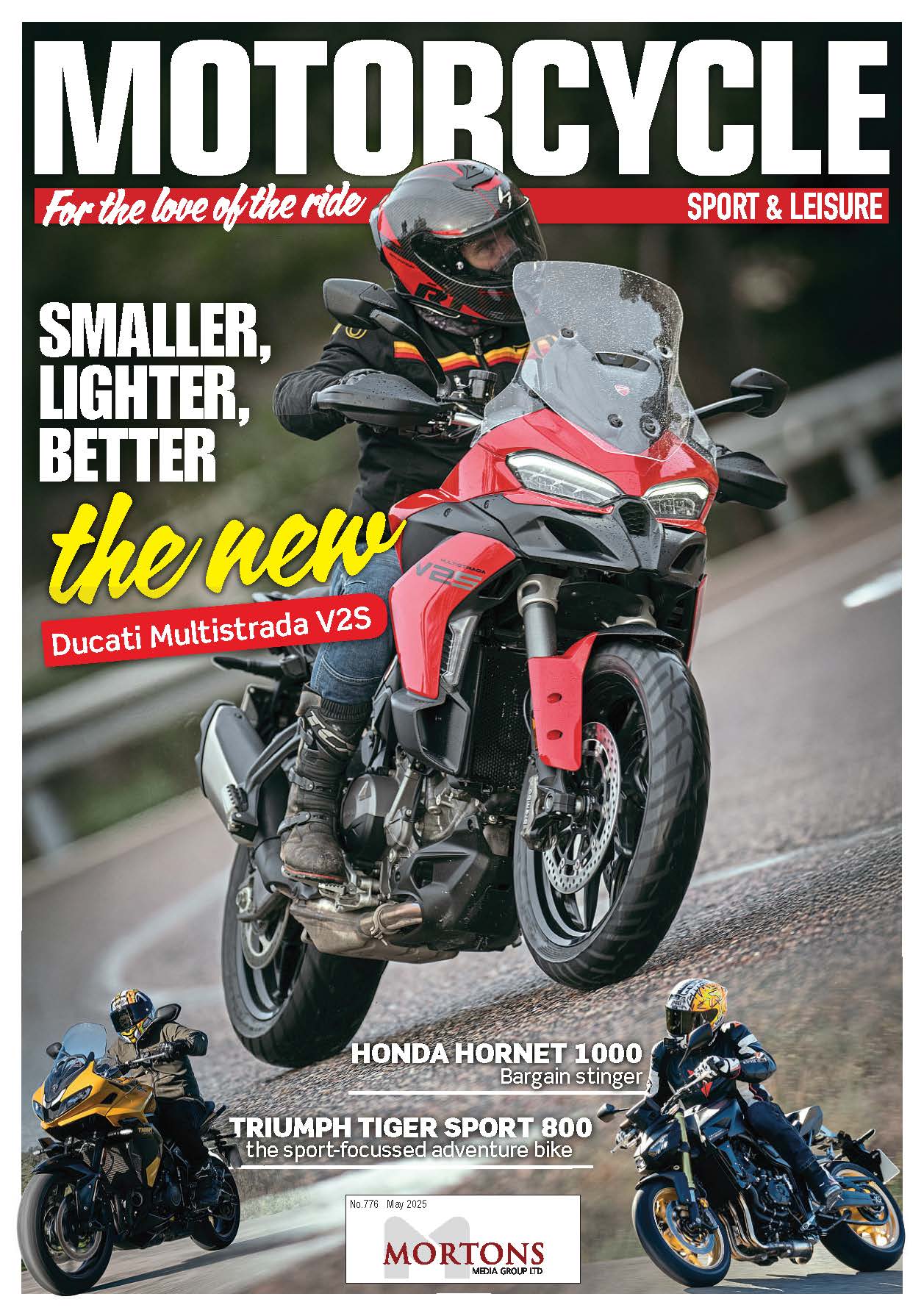For many motorcyclists, one of their bucket-list trips is an American road trip, taking in as many of the sights of the 50 States as possible.
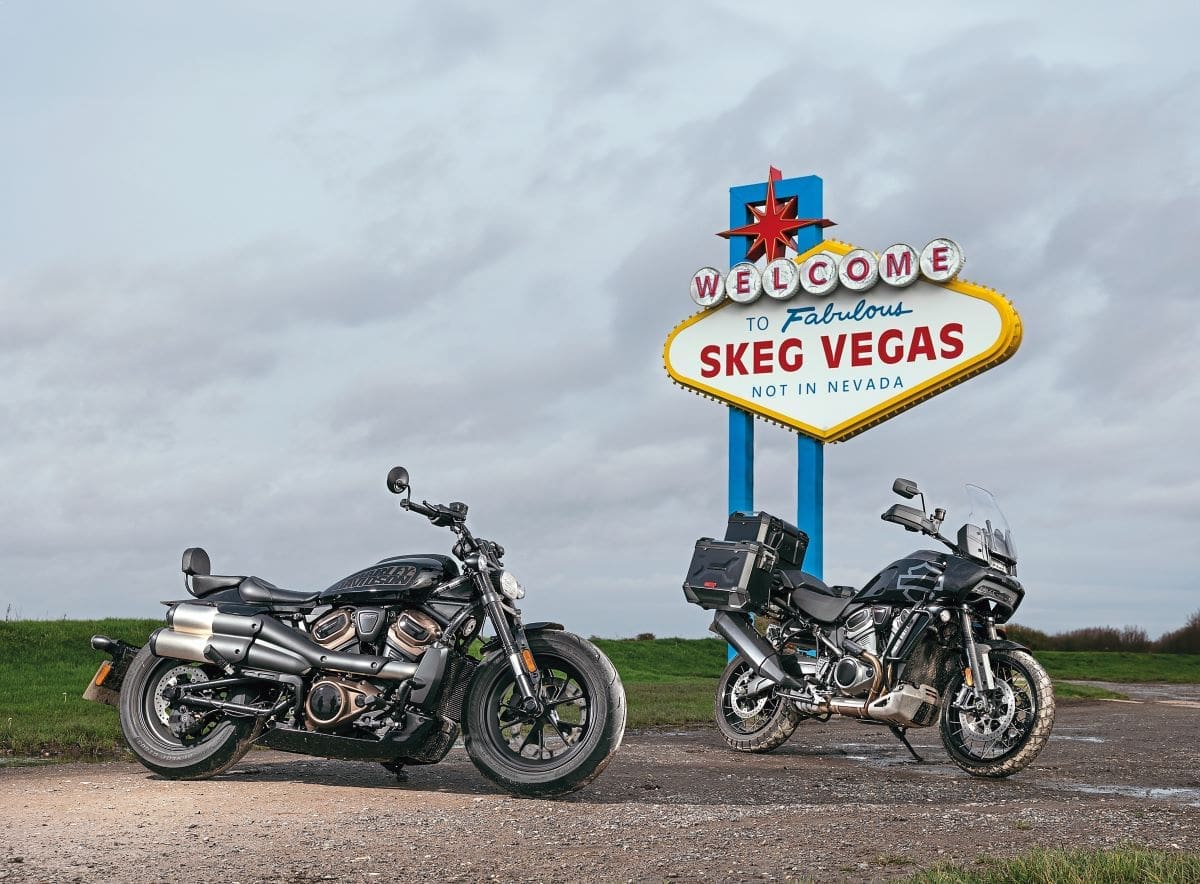
Words: Dave Manning, Ross Mowbray & Matt Hull Photography: Gary Chapman
An all-American road trip would be entirely appropriate for a pair of Harley-Davidsons, particularly in the year of the motor company’s 120th anniversary. And so that is exactly what we planned, taking perhaps the most diverse twosome from the company’s range (or, at least, those in the range that are sold in the UK), and heading out to see some of those things that make America great.
With just one small problem. We have neither the budget nor the time to travel across the Atlantic, so we had to make do as best we could within the time and financial restraints set upon us. Essentially, this meant just a single day riding within one county. Although it was still a rather pleasant trip out on a late October weekday fairly devoid of traffic, albeit covering only a tiny fraction of the mileage that the equivalent Boston – New York – Vegas – Hollywood – Miami Beach trip would have entailed. Yet all of those very places were represented in our mini adventure on these two water-cooled Milwaukee steeds.
What did we make of the Sportster S?
The Sportster S is one of three variations from the Sportster range. Is it a Sportster? Is it fun? One thing’s for sure – it looks brave.

Words: Matt Hull
Life is now about what you look like. What social media will judge you on. How ‘friends’ you’ve never met see your position in society. To hell with reality, comfort, practicality or happiness – making a statement is the new way to earn a place in this vain world. Attitude and money. The Sportster S fits this bill well.
The fat-tyred, 1252cc, 120bhp V-twin, with its twin high-up pipes and ‘in control’ riding position is well suited to give you a look of knowing what you want. You are in control. For years, Harleys have been modified by their owners for that 30s Harley-Davidson 45 look that servicemen had, and Hollywood craved. But now you can have it straight from the showroom without getting your fingers dirty, for £13,887 or £160 per month.
Riding the Sportster S has really surprised me, and in a good way. That ridiculous, 160-section front tyre handles a lot better than you would imagine. The geometry has been set up to accommodate it, and even the steering lock is superbly tight – real world practicality I hear? It’s a little firm, but the temperature on this autumn day was low and the adjustable suspension could make up a little for that, giving feedback and the ability to tailor it. Hell, older Harley owners would have loved front forks with damping…
Riding the bends feels different to your normal, 120/70 17in front tyre, but not unnervingly so. A weight of 225kg is not too heavy to adjust in corners and that ‘commanding riding position’ puts you in, well, command. Pushing and pulling the ’bars and weighting the forward footrests has you aiming accurately, allied by a superb – for a cruiser – ground clearance. You really would have to be burying the front on the brakes into a roundabout to ground out, in which case you bought the wrong bike.
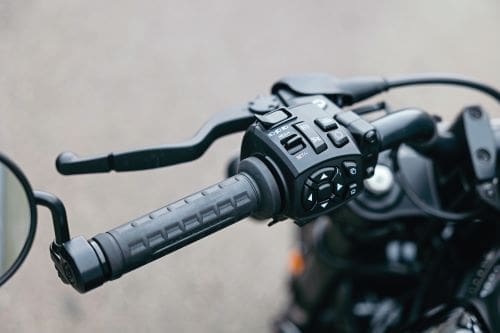


Command you are in. But it’s not all looks, as the riding ‘triangle’ of hands, bum and feet really seems to be thought out. Your back is forward enough to minimise hefty suspension jolts from the rear; the ’bars keep your arms wide yet comfy; and the seat is – get this – quite sumptuous! The irony is the three-gallon tank will mean you get to stretch more than regularly. But it was a pleasure to be riding the Sportster S while watching Ross trying to clamber up atop the Pan America like a scaffolder mounting an unbroken horse. And I looked much, much more cool.
The V-twin engine is a stormer. It has modern manners; it responds really well to the three nicely set up rider modes of Sport, Road and Rain, giving a worthy difference to suit riders or weather. The Road mode has a nice, smooth initial throttle response until it gains more revs, but by that time the 120bhp engine has got you moving rapidly. Rain is as you expect, soft as hell, but I was looking forward to Sport. My better half owns a 2009 XR1200, an olde skool Evo Harley that may only have a mere 90bhp, but you get it all when you ask, thanks to an old-fashioned method of what we called ‘throttle cables’. This instant thrust is addictive, so I was looking forward to 30bhp more. But though twisting the throttle gives speed, that ‘crack’ of power is missing, replaced by a more sensible and perfect power delivery. This bike shouldn’t do sensible.
Crucially, the Sportster S doesn’t back up its pace with a quality soundtrack. Original exhaust, yes, but hit the start and the engine first sounds like the oil pressure is low, then just sounds like an engine. Where’s the ‘potato, potato, potato’? As the revs rise there is no improvement, it just sounds, well, like an engine.
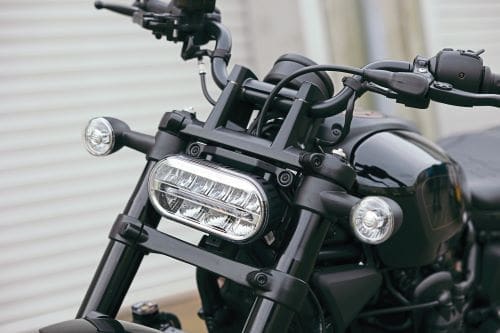
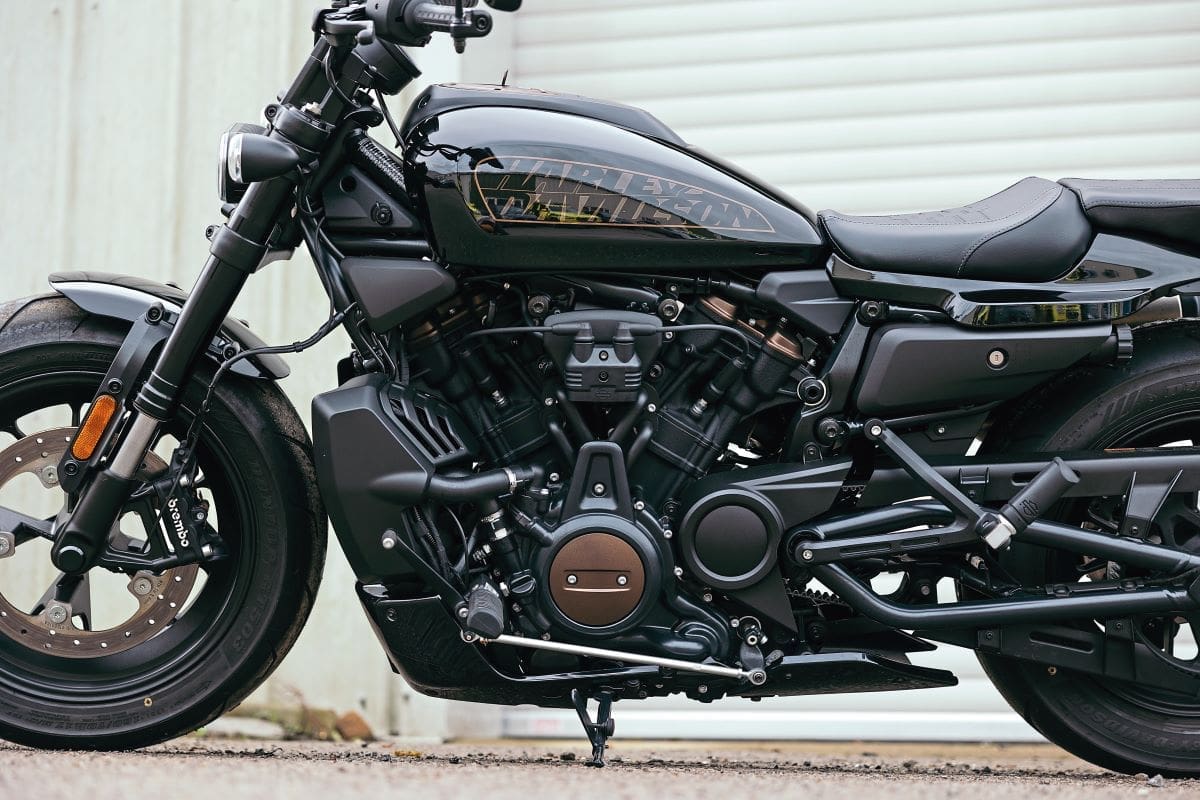

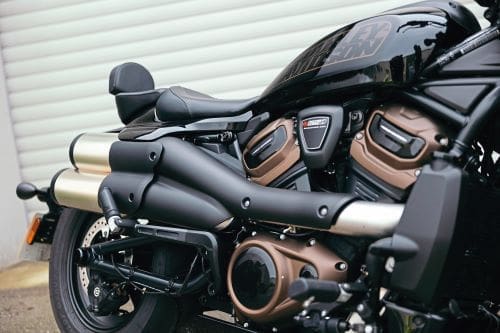
The hardman image becomes more of a thin veneer, being let down by such middleclass addictions as ‘electronic aids’, ‘phone connectivity’ and ‘infotainment’. The dash is so full of info and symbols on it as to be indecipherable when riding, and there are more buttons on the handlebars than an F1 steering wheel. No, I don’t want my heated grips on. Thought out and designed by marketing people that don’t ride.
The Sportster S doesn’t feel or sound like an olde skool Harley. But they held on as long as they could and had to move on sometime. For me, leave the electrogadgets so you can enjoy that fantastic blend of attitude; the handling that has no right to be as good as it is; same as the comfort; and that powerful, well-sorted engine. £14k is a lot of money, and you are getting a lot of bike.
Specifications
Harley-Davidson Sportster S
Price: from £14,805
Engine: 1252cc, 60° V-twin, water-cooled, DOHC, variable valve timing
Power: 121bhp (90kW) @ 7500rpm
Torque: 92lb-ft (125Nm) @ 6000rpm
Frame: Steel tubular
Wheelbase: 1520mm
Brakes: (F) 320mm disc, radially mounted, monoblock, 4-piston Brembo caliper (R) 260mm disc, floating single piston caliper
Transmission: 6 speed, belt final drive
Suspension: (F) 43mm inverted fork with compression, rebound & spring preload adjustability, 92mm travel (R) Piggyback monoshock with compression, rebound & hydraulic spring preload adjustability, 37mm travel
Wheels/Tyres: (F) cast aluminium wheel, Dunlop 160/70R17 73V tyre (R) cast aluminium wheel, Dunlop 180/70R16 77V tyre.
Seat height: 765mm
Fuel capacity: 11.8 litres
MPG: 49mpg
Weight: 225kg (wet)
Warranty: 2 years
Service intervals: 5000 miles
Contact: www.harley-davidson.com
What did we make of the Pan America?
The Harley that’s nothing like a Harley.
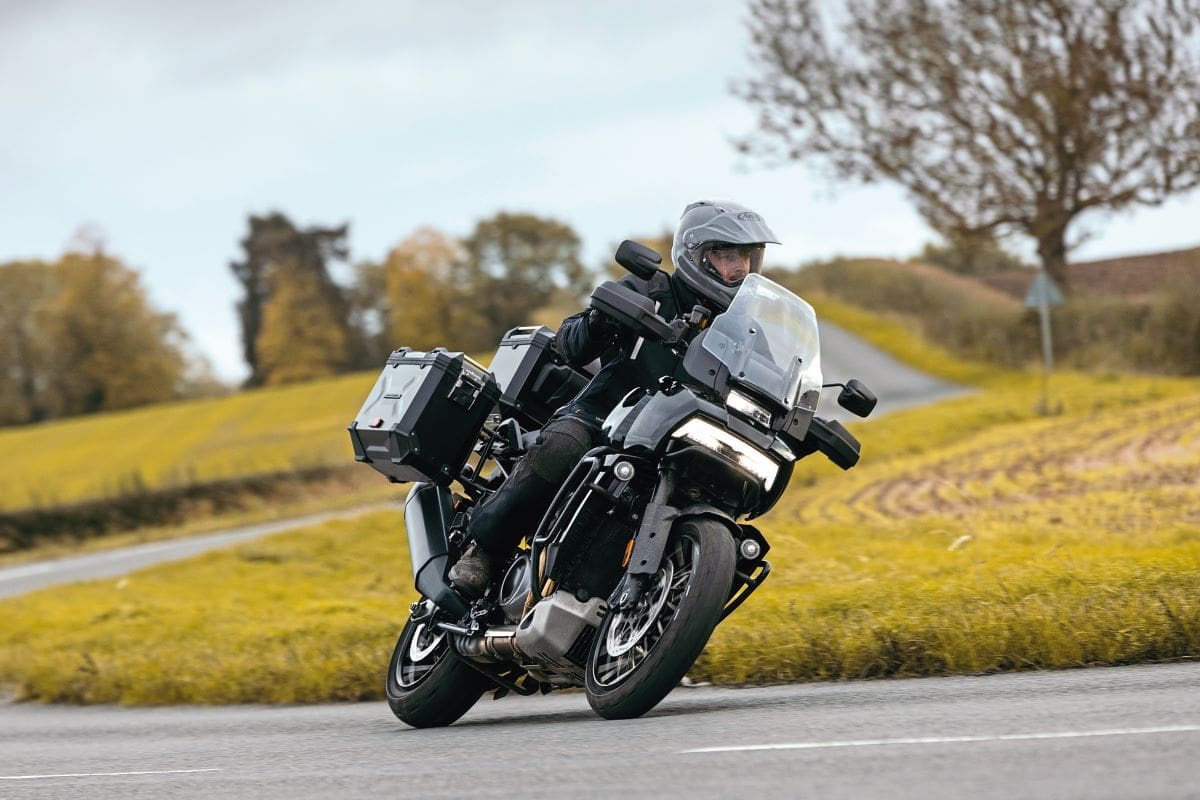
Words: Ross Mowbray
The world’s an ever-changing place, and motorcycling reflects that. Manufacturers are constantly navigating the peaks and troughs of what’s ‘on-trend’ and what punters want to buy. That’s why Harley-Davidson can no longer rely on its plethora of cruisers and tourers to bring in the big bucks. A hardcore base of enthusiasts in a fairly specific sector of the motorcycling market wasn’t enough for the American firm so, over the last few years, it’s been diversifying its range and, most surprisingly, releasing an adventure bike.
It caught me off-guard when I first rode it in 2021, far exceeding my admittedly limited expectations by being a very capable adventure motorcycle. I spent a few glorious days exploring Dartmoor and Exmoor, pottering down quiet country lanes, cutting across wild, expansive moorland, and even managing to search out a few gentle byways to put its off-road prowess to the test. Slowly but surely, I fell for the hefty American bruiser; finding joy in working its un-Harley-like V-twin motor; exploiting its all day comfort; and making full-use of its rich array of rider technology.
The Pan Am was always going to have a tough time – there’s a raft of established bikes from firms which’ve spent years perfecting their adventure bike. BMW’s much lauded new R1300GS will likely remain the benchmark, but add into the mix KTM’s 1290 Super Adventure, Ducati’s growing range of V4 Multistradas and Triumph’s ever-improving Tiger 1200, and the H-D shouldn’t get a look in. But it does.
It’s a bit different for starters, and I reckon that counts for a lot. The Pan Am’s looks caused quite a stir when the bike was first revealed, and plenty of potential punters were dismissive of the funny-looking front end – but in person it’s refreshingly unusual in a rugged, still-an-adventure-bike kind of way.
It’s packed with technology, too. In addition to the usual adventure goodies (engine guards, centre stand, heated grips, cruise control, rider aids and modes), it comes with Harley’s own Adaptive Ride Height System which lowers the seat height to just under 800 millimetres when the bike comes to a stop. The system is only available for the 1250 Special, because the lowering kit relies on its more advanced Showa electronic suspension package. It might appear a bit gimmicky, but actually, it’s a pretty neat addition – and with a load of other manufacturers implementing their own system in the intervening years since the Pan Am’s launch, it looks as though they were on to something. And anything that’s going to make a big adventure bike a bit easier to manage for shorter riders deserves some praise.
The riding position’s not quite your typical adventure bike. It has all the constituent parts: wide bars, neutral pegs and a plush seat, but it feels like you’re sat in the bike, rather than on top of it; which makes it feel more like a tourer than an out-and-out adventure machine. You’re encouraged to lean forward a little and reach out to the bars, too. I didn’t find it the roomiest of rides (probably because of my long legs), but it’s perfectly comfortable for long days in the saddle. There’s plenty of protection from the elements from the easily-adjustable screen, and the handguards do a nice job of keeping the cold off. The heated grips are great, too, and a welcome addition when belting round Lincolnshire in October.

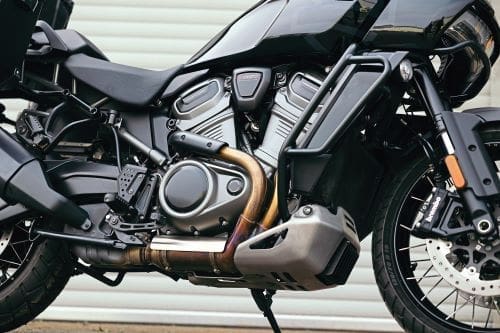
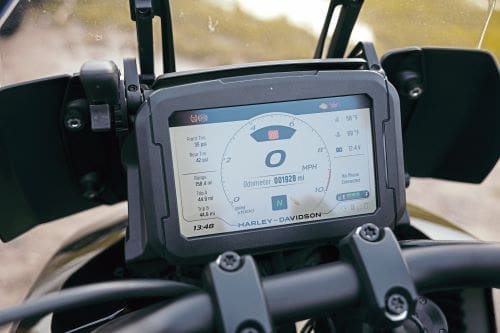
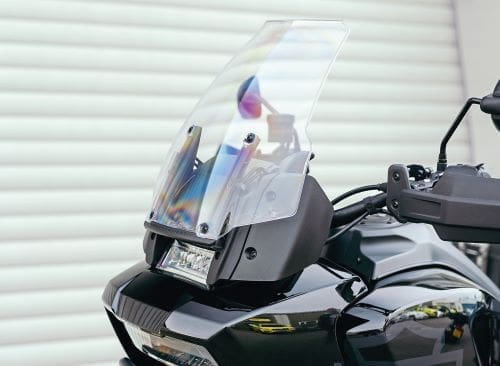
The 1252cc liquid-cooled V-Twin motor kicks out a claimed 150bhp and 94lb-ft of torque. That’s plenty to be going on with – and yet it’s quite unlike any other Harley I’ve ridden; still proving itself versatile, while being less willing to chug along in higher gears. Thankfully, there’s still plenty of meat to the bones and enough character to fall in love with, despite it lacking that iconic H-D sound. Ultimately, it feels plenty smooth, while offering a healthy whack of low-down grunt that’ll soon see the scenery blurring and the speed limits bypassed.
Other tests have bemoaned the gearbox for a slightly agricultural feel, but I had no such issues. It’s not exactly light, but I’d sooner have something reassuringly solid fitted to an adventure bike. The Brembo brakes offer ample bite, and even on slippery roads I had no issues pulling the Pan Am up from speed. There’s a little dive under heavy braking, but that’s to be expected with long travel suspension, even if it is electronic.
Those springs are actually one of the Harley’s best features. The Showa electronic system is impressively sophisticated, allowing the Pan Am to both measure and adjust preload and damping as it goes, depending on your speed, load, and the riding conditions. Flicking between the rider modes helps to transform the bike from a gentle-ish tourer that’s happy pottering around (Rain) to a corner-hungry beast that feels surprisingly taut (Sport). And the rider modes are incredibly easy to flick between – the H-D system might be one of the most straightforward and intuitive I’ve used, particularly when you consider the raft of stuff you’ve got to play with to help get the most out of the bike. The big screen and simple button layout just work (Honda, take note). It’s not exactly a handling marvel, and the front end does suffer from some of the vagueness you often experience on big adventure bikes, but ultimately it feels planted and composed, though it definitely prefers to be muscled rather than nursed around corners.
I didn’t get on so well with the self-cancelling indicators, and I didn’t love the riding position as much as other adventure bikes I’ve ridden – but they’re both personal things, and neither proved detrimental to my enjoyment of the bike. It’s really good at the end of the day.
Coming in at just shy of £17,000, the range-topping Harley-Davidson Pan America Special is a serious proposition in the saturated adventure motorcycle market, holding its own with some of the more established competition. It’s not cheap – but for a bike loaded with technology and some top standard equipment, it feels like good value.
It’s different enough in its styling, seriously well-equipped and decent value for money for its specification. If you’ve never considered a Harley-Davidson before – now’s the time. Personally, I can’t wait to see what they do with the next generation version.
Specification
Harley-Davidson Pan America
Price: from £15,755
Engine: 1252cc, 60° vee twin, water-cooled, DOHC, variable valve timing
Power: 150bhp (112kW) @ 8750rpm
Torque: 95lb-ft (128Nm) @ 6750rpm
Frame: Tubular steel
Wheelbase: 1585mm
Brakes: (F) Twin 320mm discs, radially mounted, monoblock, 4-piston Brembo calipers (R) floating, single piston caliper
Transmission: 6 speed, chain final drive
Suspension: (F) 47mm inverted fork with compression, rebound & spring preload adjustability (R) Monoshock with compression, rebound & hydraulic spring preload adjustability
Wheels/Tyres: (F) Cast aluminium wheel, 120/70R19 60V Michelin Scorcher radial tyre (R) Cast aluminium wheel, 170/60R17 72V Michelin Scorcher radial tyre
Seat height: 850mm/890mm
Fuel capacity: 21.2 litres
MPG: 5.5l/100km
Weight: 245kg (wet)
Warranty: 2 years
Service intervals: 5000 miles
Contact: www.harley-davidson.com
Conclusion
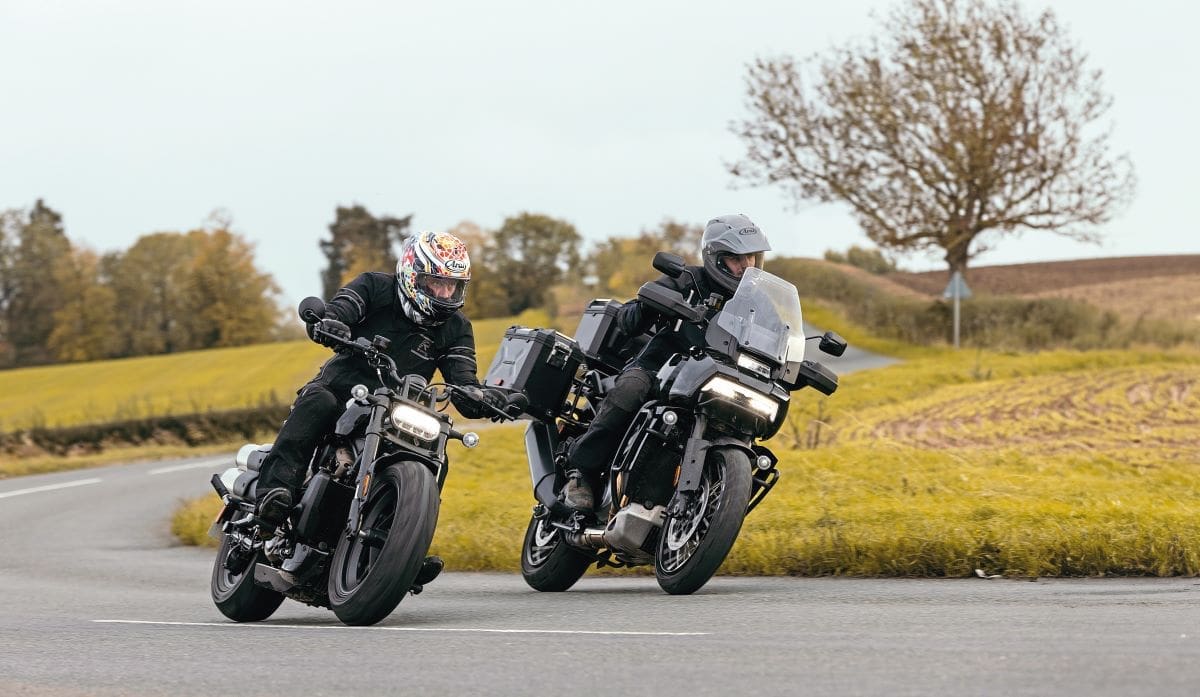
While both of these bikes have the same heart, with the Revolution Max powerplant bringing a 21st century level of emissions and technology to a brand that prides itself on heritage, they actually both remain at a distance from other models in the range. It could be argued that, with the electrically-powered LiveWire project now separate from the H-D range (being marketed and sold under the LiveWire brand), that these two bikes are the most important in the range as far as the future of Harley’s conventional markets are concerned. The Pan America with the potential to tap into the ever-expanding adventure bike market, with the Sportster S replacing the Evolution-engined Sportster as the company’s perceived entry-level machine.
Of course, the MoCo are all too aware that the expanding markets in the East are equally as important as their conventional markets in Europe and, especially, the States, and it is there where its true entry-level machines are being marketed to best effect, with the single-cylinder X350 and X500 being built in collaboration with Chinese company Qianjiang. Right now, it seems unlikely that we’ll see either of the two singles sold in the UK, or even anywhere outside of the Eastern markets, particularly China and India.
So, while we haven’t included one of the larger-capacity models using the Milwaukee-Eight V-twin (we had, initially, planned to include a CVO spec’d Road Glide), we instead opted to focus on the two Revolution Max-powered machines, as one does wonder just how much longer a big-capacity V-twin, with valves operated by pushrods, can remain in the line-up? Particularly when you bear in mind that pushrods were dropped by most manufacturers about halfway through the last century…
That said, the Sportster S clearly has Harley blood running through its veins. It has the right stance, the right looks, and a smidge of MoCo heritage with the exhaust styling reminiscent of the XR750 dirt track racer (as a factory spokesperson might say, “The winningest bike ever built.”). The marginally quirky riding experience, in part due to the fat front tyre, and the ‘half-open penknife’ riding position are nothing new to H-D, but the Pan America is a different thing entirely. An incredibly brave move by Harley, building a bike to take on the multitudinous variety of adventure bikes on the market, and yet it works. Not only is it capable on- and off-road, it appears that the public like it, too, and it’s steadily becoming an alternative to the class-leading German machine that is perhaps a little too common for some folk. My conclusion? Harley may be an old company, but it’s not old-fashioned, and these bikes prove that it’s looking forward as much as it’s looking back at its heritage.

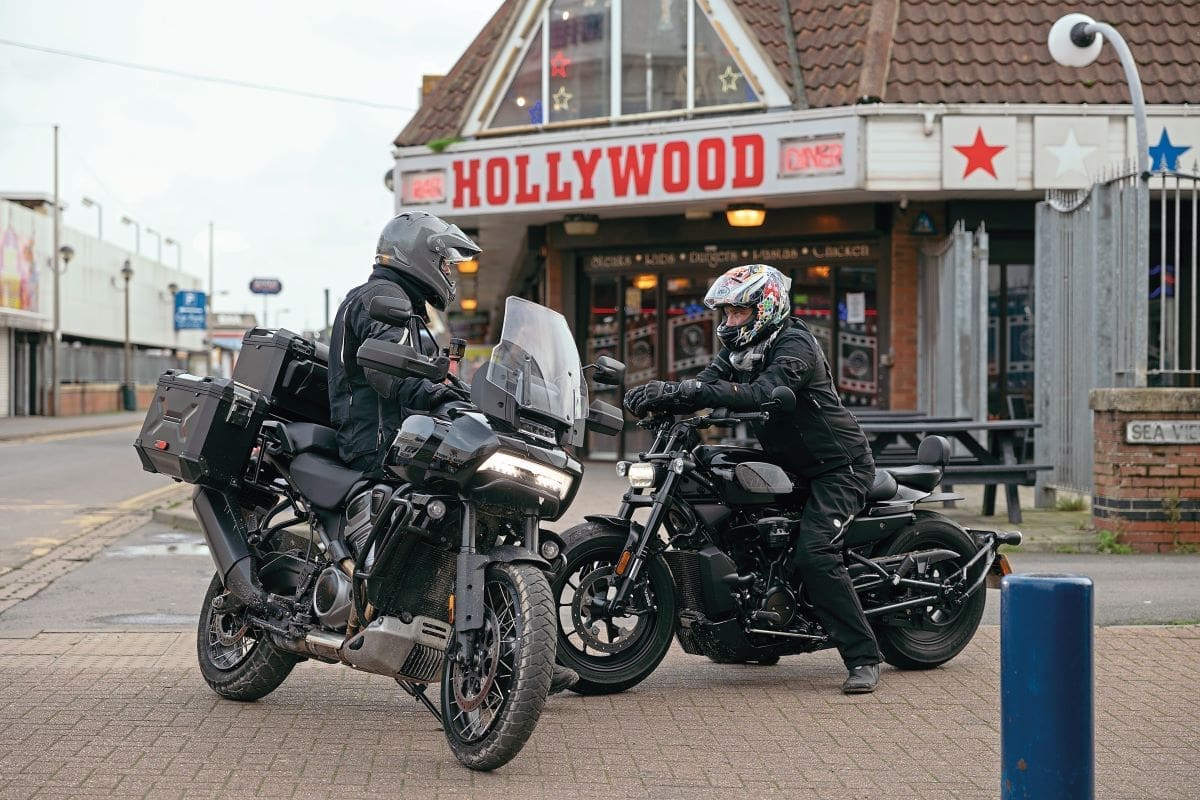
Small-scale America
No doubt many of you will have worked out that our American trip was all undertaken within Lincolnshire. If the mention of Boston and New York (within five miles of each other) wasn’t enough, then the picture of the Skegness stadium – that proudly states that it’s ‘Not in Nevada’ – should have made it blatantly obvious.
Of course, if you wanted to create your own America in Blighty road trip, you don’t have to confine yourself to the wonders of Lincolnshire, for there is a California in Norfolk; Washington and Philadelphia in the north-east (and another Washington in the South Downs); Woodstock (north of Oxford, rather than New York state); Hollywood in Birmingham (there’s a double whammy!); and plenty more. And, if you get creative, as we did, then you’ll find lots of entertaining photo opportunities – indeed, the Miami Beach Caravan Park probably couldn’t be aesthetically and culturally further from the art deco frontage of its Floridian namesake…
Enjoyed reading this article? There’s plenty more where that came from in Motorcycle Sport & Leisure Magazine.

